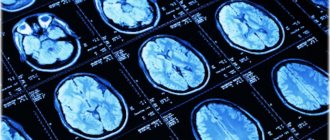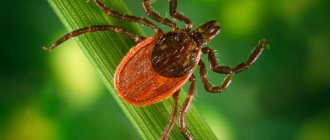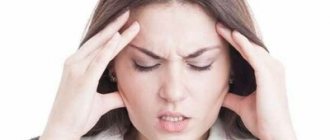Article on the topic
Why do people talk in their sleep?
Indeed, there is a disease in which there is an irresistible desire to sleep, regardless of where the person is. This is narcolepsy - from the Greek “narkē” - numbness and “lēpsis” - sleep, in another way - Gelineau’s disease, or paroxysms of irresistible drowsiness. This disease is quite rare, usually developing between the ages of 20 and 50, more often in men. The prevalence of narcolepsy in developed countries is 20–40 cases per 100,000 people.
Strange story
Of course, not all sleepiness is narcolepsy. There are times in any person's life when the need for sleep increases. Here, for example, is the story that happened to the author of these lines in his youth.
After two unsuccessful attempts to become a student and service in the army, I entered the university. The day before I had an affair with one girl, we were going to get married, but then we broke up. I was very painfully experiencing the breakup and then, while studying in my first year, I suddenly felt a strange state...
I was attacked by a stupefying drowsiness, I could not stay awake for more than thirty to forty minutes, a maximum of an hour, then I inevitably fell asleep. Moreover, it came at the most inopportune time, in the most inopportune place: on the subway, at a lecture. To prevent this from happening, I decided to get enough sleep: during recess I would find an empty classroom and, sitting down on three pushed-together chairs, instantly fell asleep. Luckily, I only needed 5-10 minutes to fall asleep. Then I got up, invigorated, and could exist normally for about another hour. Then something like dizziness began again and it was necessary to urgently take a horizontal position. This state lasted two or three days and passed.
Ten years later, these attacks of drowsiness were repeated after another stress - the death of my father. On weekends I slept around the clock. I fell asleep on the train and in the subway. So, maybe this is narcolepsy?
At the Center for Somnological Research of the Ministry of Health and Social Development of the Russian Federation, Professor Yakov Iosifovich Levin explained to me that attacks of drowsiness recurring once every ten years are unlikely to be a disease. Normal stress from prolonged overexertion manifests itself differently in different people. Some cannot fall asleep, others, on the contrary, sleep like marmots, and this helps them recover and come to their senses. In patients with narcolepsy, attacks are much more severe and occur more often.
Causes of the disease
To date, doctors cannot identify specific causes that directly cause narcolepsy. However, long-term research, which has been actively and quite successfully carried out over the last hundred years, allows us to make some well-founded assumptions.
It is believed that the main cause of unreasonable sleepiness is a lack of orexin, also known as hypocretin.
This is a substance (the so-called neurotransmitter) that is responsible for the uninterrupted transmission of nerve impulses between cells in the body, as well as for appetite and sleep - the body’s energy resources.
Drowsiness occurs when the coherence of this process is disrupted. This is exactly the kind of failure that occurs during normal fatigue, but in this case it is natural. But doctors and scientists have not yet figured out why it occurs, causing narcolepsy.
However, there are some factors that lead to a decrease in orexin levels:
We recommend reading! Click on the link:
How long can a person go without sleep without harm to health?
- Nervous exhaustion of varying degrees.
- Diabetes.
- Infectious diseases affecting the nervous system.
- Hereditary predisposition.
- Brain injuries, concussions.
All reasons are related to the nervous system, and this is understandable. The mechanism of nervous diseases works on the principle of blocking the transmission of nerve impulses, since the brain perceives some of them as “hostile”, and in this aspect the body, in fact, works against itself.
Thus, the causes of narcoleptic syndrome are both the predisposition of the body and the person’s lifestyle. When these two reasons begin to work together, the disease is practically unavoidable.
Phase confusion
Scientists equate the sensations of a patient with narcolepsy to the state of a person deprived of sleep for two days. Despite their excruciating sleepiness, narcoleptics often cannot fall asleep properly at night.
With this disease, there are repeated attacks of sleep, which are no different from normal, but occur in an inadequate situation. If you watched the movie “Oklahoma As It Is,” then you probably remember how its hero fell anywhere due to bouts of drowsiness.
Perhaps the internal cause of narcolepsy is disintegration syndrome, the untimely onset of stages of sleep, especially fast sleep. Let us remember that sleep is divided into phases. “Slow sleep” consists of four stages, levels. The first is the most superficial, the last is the deepest. The changes that occur during each stage or during the transition from one to another can be traced on the encephalogram.
During sleep, the encephalogram shows the presence of faster waves. When we fall asleep, the pattern changes, as if calm sets in. As sleep deepens, the waves smooth out even more, and “delta sleep” begins.
After an hour and a half, dreams arise, and the encephalogram again resembles the curve of a waking person. At this time, the sleeper can observe eye movement under closed eyelids - this is the “REM sleep phase.”
Patients with narcolepsy fall asleep in less than 10 minutes - the REM sleep phase begins early in them, but the deep, delta sleep phase is completely absent. That is, they sleep superficially, and there are many night awakenings.
Differential diagnosis
It is necessary to differentiate narcolepsy first of all from epilepsy. The symptoms of the pathology are also similar to the clinical picture of other types of hypersomnia: psychophysiological, post-traumatic (provoked by a traumatic brain injury, the presence of an intracerebral hematoma), psychopathic (occurs against the background of mental disorders such as schizophrenia or hysteria), associated with inflammatory, tumor or vascular, cerebral diseases, caused by somatic pathologies (diabetes mellitus, pernicious anemia, hypothyroidism, liver failure).
First symptoms
In addition to severe daytime sleepiness, the symptoms of the disease are as follows.
● Cataplexy is an attack of sudden general weakness against the background of any strong emotions, no matter positive or negative, laughter, crying or amazement. The attack can develop so quickly that the patient is at risk of falling and getting injured. Its duration ranges from several seconds to several minutes. This is usually followed by falling asleep.
● Waking dreams are vivid visions similar to a dream. They are usually accompanied by anxiety. Visions occur either at the moment of falling asleep or during awakening. Patients may see objects or people, hear music or voices.
● Sleep paralysis is complete immobility that lasts from a few seconds to several minutes after waking up. The person is fully conscious, able to assess the situation, but unable to move. Sleep paralysis is most common in the morning, but can occur at other times. Over time, other symptoms may appear.
You can suspect the disease yourself by daytime sleepiness, but only a specialist in the field of sleep medicine can make an accurate diagnosis after conducting diagnostic studies: polysomnography, encephalography, and so on. Unfortunately, it is not always possible to diagnose the disease quickly, because various sleep disorders are common, so many doctors do not even think about the rare disease.
It is not yet possible to completely get rid of narcolepsy, but symptomatic treatment of the disease can significantly improve the quality of life. Your doctor may prescribe medications to help relieve daytime sleepiness and improve nighttime sleep. Medications with a psychostimulating effect are effective - antidepressants of various groups.
Possible sleep disorders
The disease refers to hypersomnia - conditions in which the duration of sleep increases or attacks of daytime sleepiness occur. An important difference from other forms is that a person falls asleep while walking during the day; he cannot control himself. The patient sleeps poorly at night and often wakes up.
In addition, with narcolepsy, the so-called “rapid eye movement” sleep - the time of dreams - occurs instantly, and in a healthy person, a period of deep sleep is initially observed, when the brain rests and there are no “night dreams”. Often the pathology is accompanied by a complete loss of muscle tone - catalepsy, which can cause a person to fall during an attack, or sleep paralysis - numbness after waking up, when it is impossible to move the limbs or turn the head.
there is hope
Of course, this is a disease that cannot be ignored. Those who suffer from it should choose their profession with special care. They are contraindicated from working at heights, with moving mechanisms, requiring increased attention, or night shifts. During an exacerbation, it is necessary to have the opportunity for short sleep breaks of 15–20 minutes at 2–3 hour intervals during the day.
At the beginning of this century, a scientific discovery was made that finally helped to understand the nature of this mysterious disease. Researchers have found that patients with narcolepsy lack orexin, a special hormone found in the brain. American scientists have developed a nasal spray that contains the hormone orexin A. During experiments (the drug was tested on monkeys), it turned out that after its injection the animals felt great, even if they did not sleep enough. Naturally, the development immediately aroused interest among the military. There is also hope for patients with narcolepsy: perhaps the day is not far off when this disease will no longer be incurable.
Forecast and prevention of narcolepsy
To date, narcolepsy has no cure. As for the prognosis for the patient’s life, the disease does not affect its duration, but significantly reduces its quality. Patients who suffer from narcolepsy are prescribed symptomatic therapy. With the help of properly selected drug therapy, you can get rid of the most pronounced symptoms of the pathology. However, it is worth remembering that taking such drugs sometimes leads to side effects. There is no specific prevention of the disease, since the exact causes of its occurrence have not yet been identified.
Interesting
It recently became known that Leonardo da Vinci suffered from narcolepsy. He developed an irresistible drowsiness after three years spent in the dungeon of the Doge's Palace. The great artist and thinker not only did not allow the disease to break him, but also learned to benefit from it for creativity. To prevent attacks from taking him by surprise, Leonardo invented a wheelchair that was always nearby, and there was also paper and a pencil nearby. As soon as the artist woke up, he immediately captured the visions that visited him during the attacks.
Methods of treating the disease
If a person notices some “frivolous” symptoms similar to narcolepsy (insomnia, absent-mindedness, fatigue and a constant desire to sleep), do not immediately fall into despair. The first thing you need to do is analyze your daily routine and lifestyle in general over the past few months. Perhaps, in fact, this is nothing more than a manifestation of chronic fatigue. In particular, insomnia, oddly enough, can also occur with severe overwork, although it would seem that a person should get 18 hours of sleep.
If there was really active and intense work on some project or report; the person experienced nervous tension from numerous public speaking or life events; perhaps you just worked too much physically and there was little time left for sleep - then you need to leave everything and go on vacation. It is best to spend this time in nature or at least just change the environment. A measured life, the absence of irritating factors, fresh air, simple exercise, healthy food and giving up bad habits and computer work will completely help bring your mental state back to normal.
Art therapy methods also help a lot in such cases:
- drawing or appliqué;
- different types of needlework (men, instead of sewing or cross-stitching, can work on wood);
- music or dance classes.
If all this does not bring the expected result, then you need to turn to more serious drug treatment.
We recommend reading! Click on the link:
Methods for getting your child to fall asleep independently
Unfortunately, no method has yet been found that would help completely overcome this disease. If narcolepsy appears, it almost immediately becomes chronic, and the person is forced to live with it. The only thing modern medicine can do is make sleep attacks more predictable and controllable. Therefore, treatment is aimed at eliminating symptoms, controlling sleep attacks and reducing their frequency.
Treatment is mainly carried out with medications. But the patient must understand that some of them are analogues of amphetamines and can be addictive. Therefore, they should be taken strictly according to the doctor’s recommendation, without exceeding the norm.
The main drugs used are:
- stimulants;
- antidepressants;
- hypnotic.
The first group reduces daytime sleepiness and stimulates activity to maintain normal daily life and the ability to work more or less fully. The second group is aimed at reducing cataplexy, general calming of the nervous system, and reducing irritability. Antidepressants also reduce the likelihood of hallucinations and sleep paralysis. Sleeping pills are used, in fact, for their intended purpose - to combat insomnia and improve night sleep, its continuity and tranquility.
Particular attention should be paid to the regimen of taking stimulants - they are often analogues of amphetamines and can cause attachment, which develops into addiction. If you exceed the permissible dose for a certain period, there will be a need for stronger drugs, including narcotics.
Judging by the reviews of patients suffering from narcolepsy, with regular treatment and minimization of factors that aggravate the manifestation of the disease, a person can live a fairly full life: sleep normally at night and work actively during the daytime. Some activities, of course, sometimes have to be excluded (for example, driving a car or working with machinery), but in general all areas of life remain accessible.
Important
Diagnosis by sleep pattern. Two tests are usually performed to confirm the diagnosis: polysomnography and the MSLT test.
For polysomnography, you must spend the night in a sleep laboratory. You will be asked to sleep in an environment as close to your usual environment as possible. Small electrodes will be attached to the skin using a sticky jelly-like substance. They record brain waves, muscle activity, heart rate and eye movements. The test is necessary to rule out other disorders that have similar symptoms.
The next day, the MSLT test is performed. During the daytime, with the same electrodes, you will be asked to sleep for 20 minutes four to five times at intervals of two hours. The MSLT test examines your sleep pattern. People with narcolepsy have a different sleep pattern from healthy people.
Consequences of excessive sleepiness
Narcolepsy reduces the quality of life, leading to various disorders, and affects the following areas:
- Physical security. The disease can manifest itself in any environment, for example, when being in places that require increased concentration of attention: on a mountain hike, while crossing a roadway.
- Mental health. The patient becomes anxious, suspicious, and is always afraid to fall asleep. Negative emotions negatively affect the nervous system.
- Physiological state. Constant lack of sleep leads to chronic fatigue syndrome, which is accompanied by disruption of a number of body functions.
- Social relations. Narcolepsy often hinders career development, since others are not always ready to understand that a person suffers from a disease and is not just lazy.
These consequences can be eliminated if you see a specialist, follow his instructions and treat Gelineau’s disease using available methods.
Why does a person fall asleep while walking?
The human brain is responsible for sleep, its normal course and deviations; the causes of problems must be looked for there. Recent research by scientists has shown that sleep disorders occur due to a lack of orexin. Orexin or hypocretin is a brain neurotransmitter that is responsible for wakefulness. In people suffering from this disease, orexin is found in reduced amounts in the cerebrospinal fluid. For what reasons its production decreases is unknown.
Hereditary predisposition is considered as the main hypothesis for the development of pathological drowsiness. Certain chromosomes provoke the destruction of neurons, their production of orexin in the hypothalamus slows down, disrupting the structure of sleep - the ratio of slow and fast phases. The fast phase, which is in excess, is ahead of the norm. Reduced activity of the activating part of the brain contributes to the appearance of REM sleep during wakefulness, manifesting itself as symptoms of falling asleep in an unexpected place at the most inopportune time.
According to scientists, hereditary causes are not enough to disrupt the structure of genes; there must also be factors that provoke a narcoleptic state, but these are only assumptions. The mechanism of development is under study. Possible influencing factors include:
- traumatic brain and cranial injuries of varying severity;
- stress leading to excess emotions, positive and negative;
- infectious diseases;
- dysfunction associated with hormonal changes.
Causes of narcolepsy (etiology)
The disease is believed to be based on an autoimmune mechanism, in which the immune system attacks and destroys brain cells, mistaking them for foreign ones. In this case, the neurons of the lateral hypothalamus die. Such aggression often occurs when several factors combine.
Genetic factor
The risk of developing symptoms of the disease is 250 times higher in carriers of a certain set of genes responsible for the interaction of immune response cells with each other (HLA-DQB1*06:02 and HLA-DRB1*15:01). Such genes are detected in 95-98% of cases in patients with narcolepsy and cataplexy, and in the general population this mutation occurs in 12-38% of the population, although only 1 in 1000 develop symptoms of narcolepsy.
Environmental factors
The risk increases 2-4 times after suffering from colds. Thus, in northern China in 2009–2010, a surge in cases of narcolepsy was recorded in children who were infected with the H1N1 influenza virus without vaccination (all children were carriers of HLA DQB1). There is a 5-fold increase in cases of the disease with streptococcal infection. Recently, studies have been conducted on another factor in which the risk of developing symptoms of narcolepsy increases by 6-9 times, namely after vaccination against the H1N1 influenza.
Narcolepsy - how to treat?
A normal quality of life is the main need of a seriously ill person, and narcolepsy is no exception.
The diagnosis is made based on the patient’s complaints and a detailed examination by a somnologist. The doctor prescribes polysomnography (an overnight sleep study in a laboratory, tracking sleep phases with a special device) and an MSLT test (in a daytime sleep study in a laboratory). Based on the tests, the dynamics of sleep patterns are compiled, and the presence/absence of the disease can be judged. Timely consultation with a doctor and well-designed therapy significantly alleviate the condition of a patient with narcolepsy. A narcoleptic takes medications in a prophylactic dose throughout his life, this allows him to reduce the number of attacks and achieve remission. Narcolepsy syndrome caused by another disease is to eliminate the underlying disease. An effective treatment regimen includes drugs:
- antidepressants – significantly reduce episodes of cataplexy and sleep paralysis;
- stimulants – eliminate drowsiness, improve human productivity during the day;
- sleeping pills – stabilize night sleep.
Narcolepsy - treatment with folk remedies
Narcolepsy is curable, many herbalists and healers believe, but this is not true. Traditional medicine can be an additional aid to drug therapy. A doctor's consultation is required. Herbs used for the disorder:
- motherwort decoction - sedative effect;
- dill seed – mild sedative and hypnotic effect;
- hawthorn fruits – eliminate insomnia;
- hop cones – relaxing effect;
- Melissa – normalizes mental processes.











